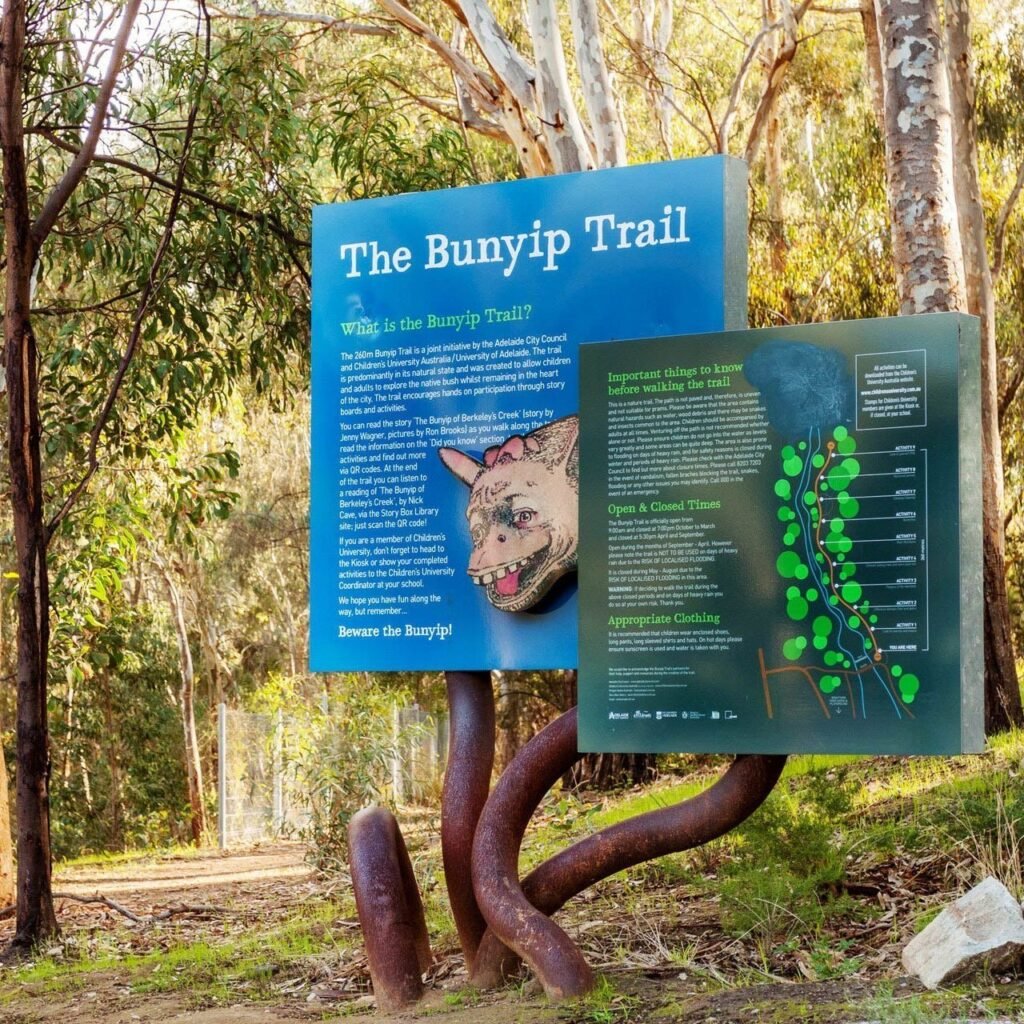Biodiversity in Adelaide: A Comprehensive Exploration
6 months ago

Adelaide, the capital city of South Australia, is not only known for its vibrant culture, art, and festivals but also for its remarkable biodiversity. Situated on the eastern shore of Gulf St Vincent, the city is surrounded by diverse ecosystems that encompass everything from coastal areas to inland regions. This multitude of habitats supports numerous species of plants, animals, and microorganisms, making Adelaide a significant hotspot for biodiversity in Australia. In this article, we will delve into the various aspects of biodiversity in Adelaide, examining its ecosystems, the species found within them, conservation efforts, and the role of local communities in protecting this essential natural heritage.
Understanding the biodiversity in Adelaide involves recognizing the different ecosystems that thrive in and around the city. These ecosystems serve as homes for flora and fauna, many of which are unique to this region and contribute to the overall health of the environment. The value of biodiversity extends beyond the aesthetic and ecological; it plays a crucial role in sustaining food security, maintaining clean water systems, and regulating the climate. As urbanization continues to exert pressure on these ecosystems, it becomes increasingly important for us to explore and protect the rich biodiversity that Adelaide has to offer.
The Natural Landscapes of Adelaide
To appreciate the depth of biodiversity in Adelaide, we must first understand its natural landscapes, which include native forests, wetlands, coastal regions, and grasslands. The proximity to both ocean and mountainous terrains creates a unique mix of environmental conditions that foster an impressive range of species. From the Mount Lofty Ranges to the coastal wetlands of Adelaide, each area hosts its distinct variety of life.
Mount Lofty Ranges
The Mount Lofty Ranges serve as the most significant geographical feature surrounding Adelaide. This region is home to numerous national parks, including Cleland and Mount Lofty Botanic Garden, which together provide essential habitat for a wide range of species. The forests in these parks are predominantly made up of eucalyptus trees, which support bird species such as the Yellow-tailed Black Cockatoo and the Superb Fairy-wren. The biodiversity in Adelaide thrives here, where rugged terrains and sheltered valleys create microhabitats that nurture both flora and fauna.
Coastal Areas and Wetlands
The coastal regions of Adelaide boast an intricate network of wetlands, including the Adelaide International Bird Sanctuary, which provides essential habitat for migratory birds and various aquatic species. These wetlands are critical for maintaining the health of estuarine ecosystems and serve as a nursery ground for fish and other marine organisms. The biodiversity in Adelaide is reflected in the presence of diverse plant life, such as saltmarshes and mangroves, which are not only vital for the ecological balance but also offer flood protection and filtration of pollutants from the water.
Adelaide’s Urban Biodiversity
Interestingly, even within an urban setting, biodiversity in Adelaide can be observed. Parks, gardens, and green spaces scattered throughout the city host a variety of native plants and animal species. These areas serve as critical green corridors that allow wildlife to thrive amid urban development. Community gardens and urban farms furthermore enhance local biodiversity by promoting the cultivation of native plants and encouraging pollinators such as bees and butterflies. Residents and local businesses are increasingly recognizing the value of green spaces, leading to initiatives aimed at enhancing urban biodiversity.
Flora and Fauna of Adelaide
The landscape of Adelaide is unique not just in terms of geography but also in the species it supports. An astounding array of wildlife, including many endemic species, can be found in and around the urban and rural areas. Understanding the flora and fauna that comprise biodiversity in Adelaide allows us to appreciate the complexity of these ecosystems.
Native Flora
Adelaide is home to a myriad of native plants that have adapted to the local climate and soil conditions. These plants play vital roles in sustaining the ecological balance, providing food and shelter for countless animal species. Common native flora includes various Eucalyptus species, such as the River Red Gum, which not only provides habitat for birds but also plays a role in water management within its endemic environment. Other notable native plants include Acacia and Melaleuca species, known for their ecological importance and contribution to the region's unique biodiversity.
Wildlife Species
In terms of animal life, Adelaide's biodiversity is remarkable. The region is home to a variety of mammals, birds, reptiles, amphibians, and insects. Notable mammals include the Western Grey Kangaroo and the Common Brushtail Possum, each playing pivotal roles in their respective ecosystems. Bird species such as the Australian Magpie and the Black Kite utilize both urban and natural environments for nesting and hunting. Furthermore, Adelaide's biodiversity includes unique reptilian species such as the Southern Brown Bandicoot, which is adapted to the coastal and forested habitats of the area.
Threats to Biodiversity
Urbanization and Habitat Loss
Rapid urban development in Adelaide has led to significant habitat loss, affecting native species and their natural environments. As more land is cleared for housing, infrastructure, and industry, the ability of wildlife to thrive diminishes. Many species face fragmentation of their habitats, which can isolate populations and hinder reproduction and survival. This loss of habitat directly contributes to the decline of biodiversity in Adelaide and necessitates immediate action to mitigate these impacts.
Invasive Species
The introduction of invasive species into the Adelaide ecosystem has exacerbated the loss of native biodiversity. Species such as foxes, rabbits, and cane toads compete with indigenous wildlife for resources, often leading to declines in native populations. These species can disrupt food chains, alter habitat conditions, and introduce new diseases, presenting greater challenges to conservation efforts aimed at preserving biodiversity in Adelaide. Effective management strategies are crucial to preventing further impacts from invasive species while promoting the recovery of native populations.
Climate Change
Climate change poses a profound threat to biodiversity in Adelaide as shifting weather patterns, rising temperatures, and changing rainfall distributions alter the habitats that species rely on. Many plants and animals may struggle to adapt to these rapid changes, leading to shifts in species distribution and potentially, local extinctions. Increased frequency of extreme weather events, such as droughts and bushfires, can further stress ecosystems that are already under pressure, necessitating urgent action to address climate issues and promote resilience among both wildlife and plants.
Conservation Efforts: Protecting Adelaide’s Biodiversity
Recognizing the value of biodiversity in Adelaide, various organizations, including governmental bodies, non-profits, and community groups, are working tirelessly to implement conservation efforts. These initiatives aim to preserve existing habitats, rehabilitate degraded areas, and raise awareness about the importance of maintaining ecological integrity.
Protected Areas and Reserves
South Australia boasts a range of protected areas and reserves that serve as vital refuges for native species and ecosystems. These include national parks such as Cleland National Park and Onkaparinga National Park, where strict regulations are in place to preserve habitats and biodiversity. By creating these protected zones, authorities aim to support the recovery of threatened species and provide safe havens for plants and animals that have lost territory due to urban expansion. The success of these strategies necessitates ongoing monitoring and management to ensure they continue to support the diverse life that Adelaide harbors.
Community Involvement and Education
Grassroots efforts are equally important in conserving biodiversity in Adelaide. Local communities have become increasingly involved in conservation initiatives, from participating in habitat restoration projects to actively engaging in wildlife monitoring programs. Educational campaigns aimed at raising awareness about local biodiversity help foster respect and understanding for the unique ecosystems that surround Adelaide. By cultivating a sense of stewardship among residents, communities can contribute to a positive impact on preserving biodiversity for future generations.
Research and Monitoring Initiatives
Research plays a crucial role in the conservation of biodiversity in Adelaide. Universities and research institutions collaborate with government agencies and non-profits to monitor species populations, evaluate habitat health, and devise effective conservation strategies. By tracking changes over time, researchers are able to identify trends and recommend management practices that ensure the resilience of Adelaide's ecosystems. Additionally, citizen science projects encourage community members to contribute to data collection, promoting engagement and awareness around the critical issue of biodiversity protection.
The Role of Policy and Governance
Effective governance and sound policy frameworks are essential for safeguarding biodiversity in Adelaide. The South Australian government has introduced various policies aimed at biodiversity conservation, including strategies that promote sustainable land use and habitat restoration. However, the implementation of these policies requires robust support from the community and collaboration across sectors, as the challenges posed by biodiversity loss are complex and multifaceted.
Legislation and Conservation Goals
The South Australian government has established various legislative frameworks aimed at protecting biodiversity. The Native Vegetation Act, for example, regulates land clearing to ensure that native vegetation is preserved, while the South Australian Biodiversity Strategy outlines specific goals for conserving the state’s unique natural resources. These legal frameworks are designed to counteract habitat degradation and promote the sustainable management of ecosystems, fundamentally contributing to the conservation of biodiversity in Adelaide.
Collaborative Partnerships
To effectively address the challenges facing Adelaide’s biodiversity, collaborative partnerships between government agencies, communities, non-profit organizations, and the private sector are essential. Such partnerships can enhance resource sharing, provide expertise, and promote collective initiatives that benefit local ecosystems. By working together, stakeholders can create a stronger foundation for preserving biodiversity and ensuring the sustainability of natural resources for years to come.
The Future of Biodiversity in Adelaide
As we look to the future, the fate of biodiversity in Adelaide rests on our collective hands. While the challenges of urbanization, climate change, and invasive species are daunting, there is also a wealth of opportunity for positive change. By embracing sustainable practices, supporting conservation efforts, and fostering community engagement, we can improve the prospects for our local flora and fauna.
Promoting Sustainable Development
The integration of sustainable development principles into urban planning is paramount for safeguarding biodiversity. By incorporating green spaces, protecting natural habitats, and considering the needs of wildlife in development projects, we can create urban environments that coexist harmoniously with nature. This path not only benefits biodiversity but also enhances the quality of life for residents in Adelaide, promoting well-being through access to nature and green spaces.
Investing in Research and Innovation
Supporting ongoing research into biodiversity conservation will yield significant dividends for Adelaide’s ecosystems. Innovations in ecological restoration techniques, wildlife corridors, and habitat management can help mitigate the impacts of human activity on native species. Investment in scientific understanding will promote informed decision-making, guiding effective conservation strategies and ensuring that the rich biodiversity in Adelaide is celebrated and preserved.
Community Empowerment and Awareness
Empowering communities through education and engagement is crucial for fostering a culture of conservation. Programs that promote ecological literacy, volunteer opportunities, and community-led conservation initiatives can significantly expand awareness about local biodiversity issues. By fostering a sense of responsibility toward protecting natural resources, we can inspire citizens to become advocates for biodiversity and actively participate in conservation efforts.
Conclusion
The intricate tapestry of biodiversity in Adelaide is a testament to the region's rich natural heritage and ecological importance. Its diverse ecosystems, ranging from the Mount Lofty Ranges to coastal wetlands, host an array of native species, each contributing to the overall health of the environment. However, the challenges posed by urbanization, climate change, and invasive species must be addressed through collaborative conservation efforts, effective policies, and community engagement. Through a shared commitment to preserving and promoting biodiversity, Adelaide can secure its ecological legacy for future generations while enriching the lives of its residents.

Leave a Reply